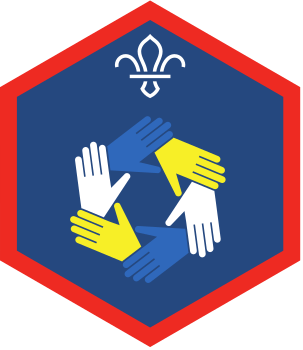
Wink murder
Before you begin
- Use the safety checklist to help you plan and risk assess your activity. There's also more guidance to help you carry out your risk assessment, including examples. Don’t forget to make sure all young people and adults involved in the activity know how to take part safely.
- Make sure you’ll have enough adult helpers. You may need some parents and carers to help if you’re short on helpers
Play the game
- Gather everyone in a circle.
- Tell everyone that you’re going to playing a game called Wink Murder. There’ll be a detective and a murderer. The murderer will kill people by winking at them. The detective will need to work out who the murderer is in three guesses.
- An adult volunteer or young leader should choose one player to be the ‘detective’.
- The detective needs to step away from the circle, making sure they can’t see or hear, such as by standing with their back to the room in a corner.
- An adult volunteer or young leader should then tap the chosen person on the shoulder to indicate that player is the murderer.
- The detective should be called back to the circle.
- The detective stands in middle of the circle and try and figure out who the murderer is by looking out for who might be winking.
- Meanwhile, the murderer will 'kill' people off by winking at them, without the detective catching them.
- If a player is killed, they should die (dramatically if they want to!) and then sit or lie down in the circle.
- The detective only has three chances to guess correctly who the murderer is.
- At the end, the murderer can become the next detective and the game starts again.
Reflection
This game was all about having fun, teamwork, body language and subtle communication. People had to work as a team to make sure they didn’t reveal who the murderer was to the detective. How did you make sure you didn’t make it obvious?
If you played the murderer, how did you make sure you didn’t get caught? Was it easy or difficult? Did everyone get the message?
If you were the detective, was it hard to look around the circle and keep an eye on everyone? Did anything help you find out who it was? Did it get easier as more people were out of the game? Was it easier knowing you had three guesses?
If you played either role, did people enjoy being the detective or the murderer? What was easy? What was hard work? If you got to try both, which did you prefer?
If you were part of the circle, how could we make it harder or easier for the detective or murderer?
Was it fun doing the acting and dramatics? Would you like to do more drama games? What other characters or acting could we introduce into this game?
Safety
All activities must be safely managed. You must complete a thorough risk assessment and take appropriate steps to reduce risk. Use the safety checklist to help you plan and risk assess your activity. Always get approval for the activity, and have suitable supervision and an InTouch process.
- To make this game harder, you could choose two murderers – though this depends on the size of the group, as it can make the game faster and rapidly reduce the guessing time for the detective. Alternatively, you could only give the detective two guesses to make the game harder.
- You could also choose an unexpected murderer, such as a volunteer or young leader.
- Be aware of your groups’ needs and safeguarding requirements. If anyone in your group has experienced an emergency, bereavement or is sensitive to activities about death, you may need to adapt this activity. Speak to young people (and their parents and carers) first to check that they’re OK to take part. You may need to change the name from ‘Wink Murder’. You could call it ‘Frankenstein’ and, instead of a murderer, you have a ‘mad scientist’. The ‘mad scientist’ winks at people to turn them into ‘Frankenstein’ and they need to freeze in a monster pose. The detective needs to work who the ‘mad scientist’ is.
- This game can be played sitting or standing – whichever way works best for everyone.
- Take time and have patience while telling everyone what to do. Give short instructions clearly and concisely. If you need to, pause, then repeat the same instruction using the same words. You could have visual resources to explain the game or a printed copy of the instructions for anyone who may need them.
- Make sure any actions are things everyone can do. To make the game easier, rather than winking, people could stick their tongue out at someone to ‘murder’ them.
- People who struggle with making choices could find all the options a bit overwhelming, so they might need extra support or to work with a young leader/volunteer to be able to choose who the murderer might be. You could ask supportive questions and remind them that they have three guesses.
- You could have a practice round of the game to make sure everyone knows what they’re doing. Let young people help explain to each other what to do, too.
- If it’s too noisy and anyone doesn’t like the noise, the person leading the activity can remind everyone to be quieter. People could wear ear defenders, or you could run the activity outside.
- The game leader doesn’t have to tap people on the shoulder to name them. Make sure they know if anyone doesn’t like to be touched.
- It’s OK if not everyone wants to act in the roleplay or be in front of the group. Some people could just sit down when they’re out.
All Scout activities should be inclusive and accessible.


